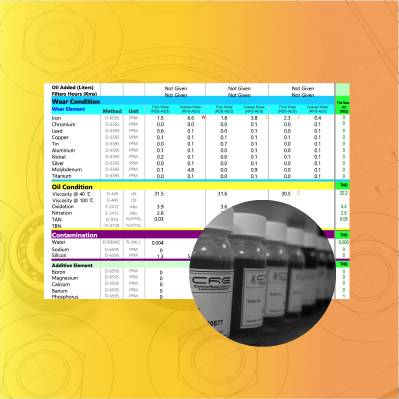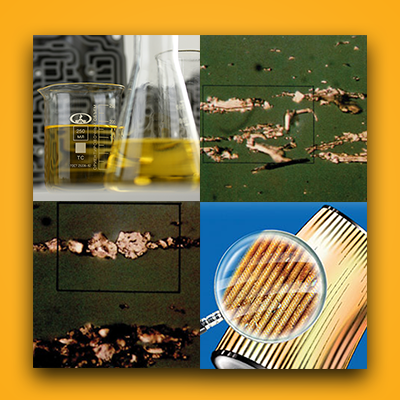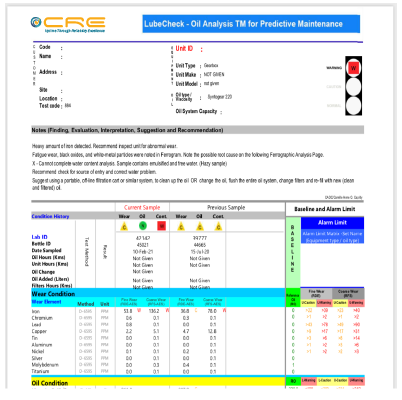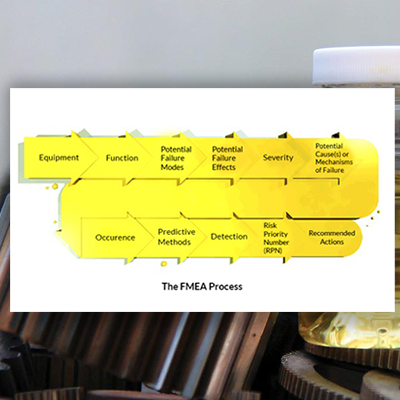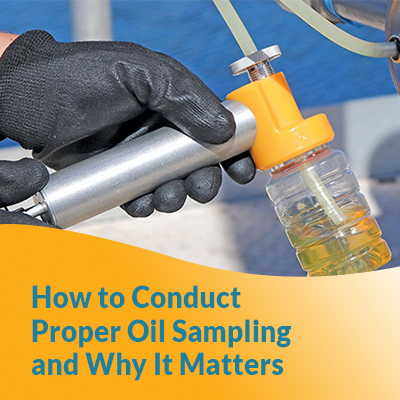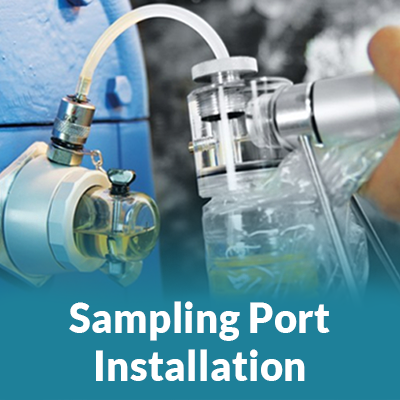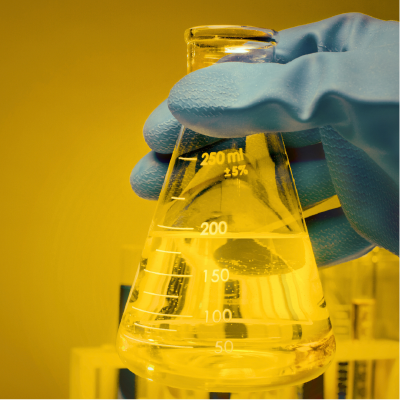The color of grease can indicate its overall quality. Grease can darken as a result of operating and environmental factors. Darkening may be a sign that the grease reached its usability limit.
We have always stressed the importance of proper sampling techniques to the accuracy of oil analysis results and machine diagnostics program. The same can be said for choosing the right oil analysis test slates or parameters. When you avail of oil analysis test packages, the tests must be designed according to the failure modes you are diagnosing and the requirements of the equipment.
Every maintenance department's worst nightmare is machine failure. On top of that, there's a challenge to determine the actual cause on a limited amount of time. The equipment breakdowns detailed in this article resisted easy fixes and were extremely expensive in terms of people, materials, and downtime.
While a good oil analysis report provides detailed analyses and actionable recommendations, it is still important for your organization to have someone who can perform oil analysis interpretation in the context of the actual machine environment. Below are some fundamental tips on how to interpret your reports.
Professional Certification seals your years of study and experience. Certification helps industries sustain standards by demonstrating an individual's competence and training. Certification serves as a symbol of trustworthiness and an industry standard. Thus, a certification must require rigorous preparation and research to be up to date with industry changes.
An oil analysis program revolves around the final oil analysis report. When personnel lack experience in reading a report, they would soon feel frustrated trying to make sense of all the jargon. Frustration leads to lack of appreciation and eventual failure of your program. For your program to succeed, your team will need to come to terms with learning how to read and interpret an oil analysis report.
For more than 60 years, failure mode and effects analysis (FMEA) has been used to determine the cause and impact of equipment and process failures to improve the reliability of equipment and systems. FMEA is a systematic procedure for identifying probable failure modes and effects before failures occur.
Without disassembling and inspecting the equipment, wear debris in a lubricant may provide insight into what is going on inside a device. It's also good idea to rule out overheating, vibration, and high device pressure before drawing an oil sample for wear debris analysis.
Time and time again, you hear how critical a good oil sampling practice is to the success of an oil analysis program. No matter how good your oil analysis methodologies are, all efforts mean nothing if your data are garbage. So, what makes a good oil sampling practice? Here are the guidelines to follow:
It is important to provide a comprehensive and systematic vision of the project while implementing a structured lubrication program. This will increase reliability while lowering operating costs.
Two of the most critical requirements of oil sampling are the correct location and the process of sampling. A sampling port is a location from which you can collect oil samples. It can either be a valve, tap, or drainpipe. A sampling port that follows the best practices ensures that you get a sample that best represents the current condition of your machine. Without a representative sample, oil analysis is just a waste of time. In other words, garbage in garbage out.
The goal of an oil analysis program is to ensure that a lubricated system is performing as it should. Your oil analysis results can help you come up with the right decisions to address the root cause of the problem or to prevent a malfunction from occurring.
Oil analysis can help you get the most out of your lubricant and equipment. Oil analysis is a very useful tool, and knowing how to read your oil analysis report is critical to your maintenance program's success.
CRE Philippines now offers Machinery Lubrication Engineer (MLE) training. This training is the highest title in the field of machinery lubrication. This training also integrates the major subjects in Machinery Lubrication and Oil Analysis Training.
Industries worldwide have embraced the Industrial Internet of Things (IIoT) to revolutionize their operations and enhance reliability. As we enter a new era of interconnectedness, the concept of Industry 4.0 has gained prominence, driving the need for digitalization, streamlined processes, and interconnectivity. This blog will explore how the Internet of Reliability transforms the industry and reshapes how we approach machine diagnostics and maintenance programs.




